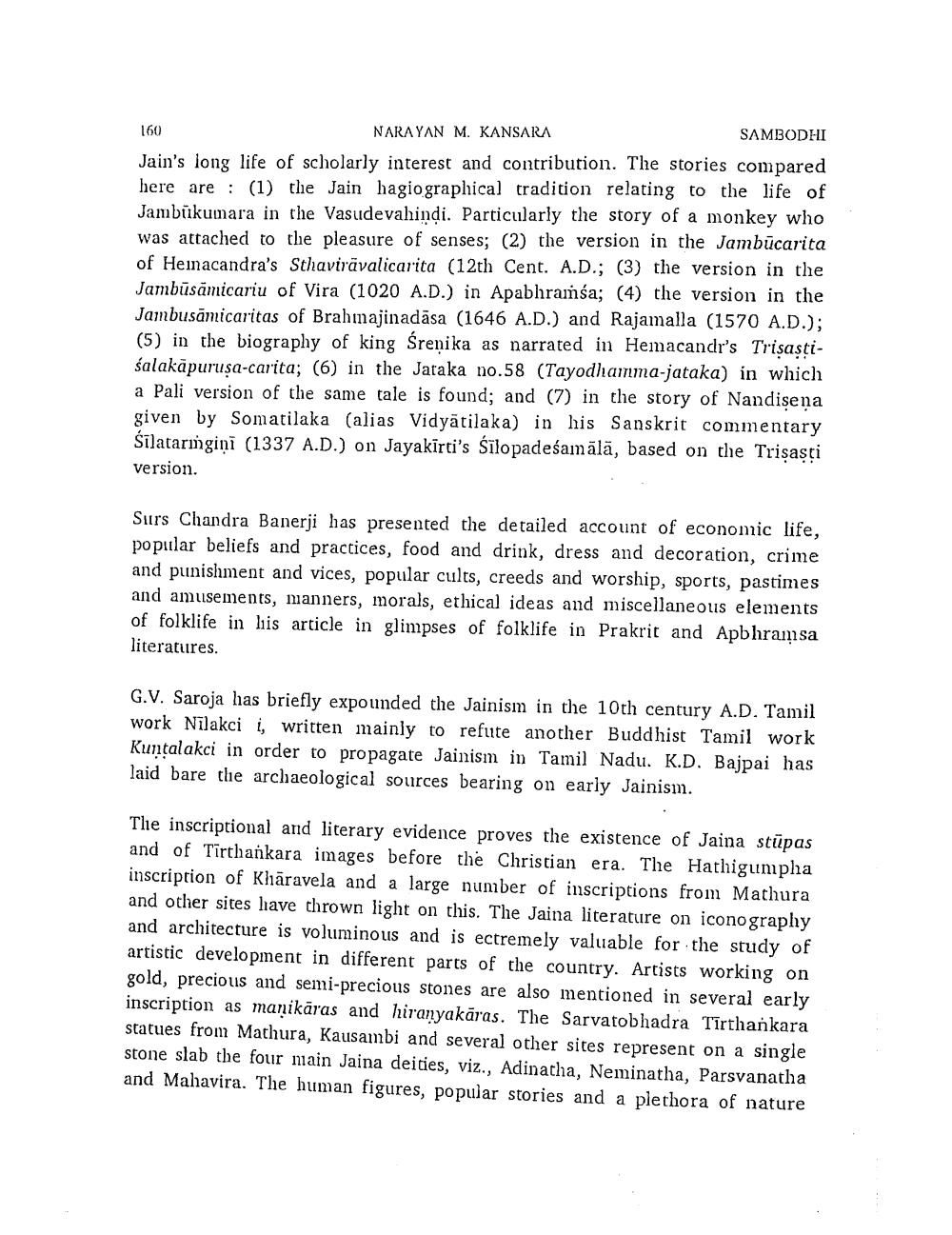________________
160 NARAYAN M. KANSARA
SAMBODHI Jain's long life of scholarly interest and contribution. The stories compared here are: (1) the Jain hagiographical tradition relating to the life of Jambūkumara in the Vasudevahindi. Particularly the story of a monkey who was attached to the pleasure of senses; (2) the version in the Jambucarita of Heinacandra's Sthavirāvalicarita (12th Cent. A.D.; (3) the version in the Jambūsāmicariu of Vira (1020 A.D.) in Apabhransa; (4) the version in the Jambusāmicaritas of Brahmajinadāsa (1646 A.D.) and Rajamalla (1570 A.D.); (5) in the biography of king Śrenika as narrated in Hemacandr's Trisastiśalakāpurusa-carita; (6) in the Jaraka no.58 (Tayodhamma-jataka) in which a Pali version of the same tale is found; and (7) in the story of Nandisena given by Somatilaka (alias Vidyatilaka) in his Sanskrit commentary Śilatarmgini (1337 A.D.) on Jayakīrti's silopadeśamālā, based on the Trisasti version.
Surs Chandra Banerji has presented the detailed account of economic life, popular beliefs and practices, food and drink, dress and decoration, crime and punishment and vices, popular cults, creeds and worship, sports, pastimes and amusements, manners, morals, ethical ideas and miscellaneous elements of folklife in his article in glimpses of folklife in Prakrit and Apbhramsa literatures.
G.V. Saroja has briefly expounded the Jainism in the 10th century A.D. Tamil work Nīlakcii, written mainly to refute another Buddhist Tamil work Kuntalakci in order to propagate Jainism in Tamil Nadu. K.D. Bajpai has laid bare the archaeological sources bearing on early Jainism.
The inscriptional and literary evidence proves the existence of Jaina stūpas and of Tirthankara images before the Christian era. The Hathigumpha inscription of Khāravela and a large number of inscriptions from Mathura and other sites have thrown light on this. The Jaina literature on iconography and architecture is voluminous and is ectremely valuable for the study of artistic development in different parts of the country. Artists working on gold, precious and semi-precious stones are also mentioned in several early inscription as manikaras and hiranyakáras. The Sarvatobhadra Tirthankara statues from Mathura, Kausambi and several other sites represent on a single stone slab the four main Jaina deities, viz., Adinatha, Neminatha, Parsvanatha and Mahavira. The human figures, popular stories and a plethora of nature




